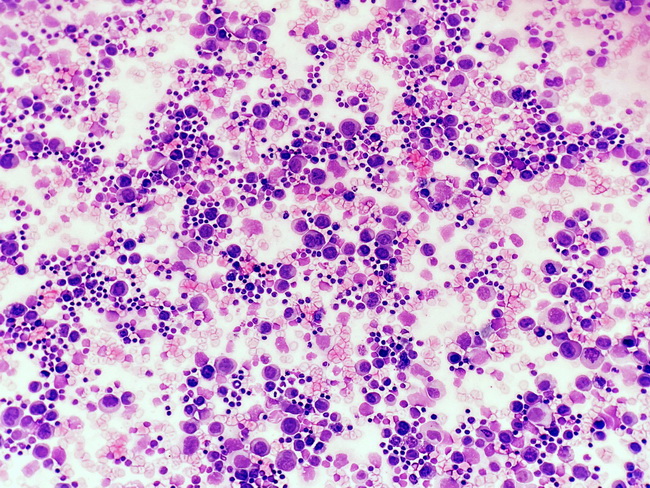Primary Effusion Lymphoma : Clinical Features


Comments:
Clinical Presentation: Primary effusion lymphoma (PEL) is mostly seen in young or middle-aged men (> 40 years) who have HIV infection and are severely immunodeficient. Male homosexual contact is the most common risk factor. Solid organ transplant recipients are also at risk of developing PEL. The patients present with malignant effusions in the absence of lymphadenopathy or organomegaly. Other manifestations of AIDS such as opportunistic infections are frequently present. One-third of patients have Kaposi sarcoma. Some patients have concurrent multicentric Castleman disease. PEL is typically limited to a single body cavity - pleural, pericardial, or peritoneal. Unusual locations, such as artificial cavity associated with breast implant capsule may be rarely involved. While the disease is limited to body cavities in most cases, it may extend to adjacent organs such as lung, soft tissues, regional lymph nodes, and bone marrow. There is an extracavitary solid tumor that resembles typical PEL morphologically and immunophenotypically but is unassociated with effusion. It can occur in lymph nodes or extranodal sites (gastrointestinal tract, skin, lungs, and CNS). This cytocentrifuge specimen is from a 35 y/o male with pleural effusion. Diagnosis: primary effusion lymphoma. See next image for a description of morphologic features. Image courtesy of: Mauro Saieg, MD, PhD; Sao Paulo, Brazil; used with permission.



